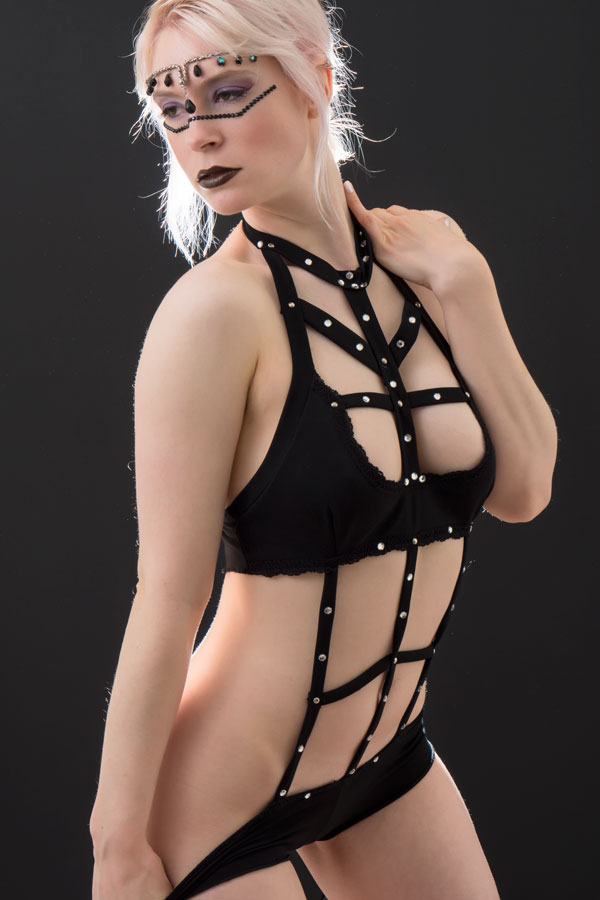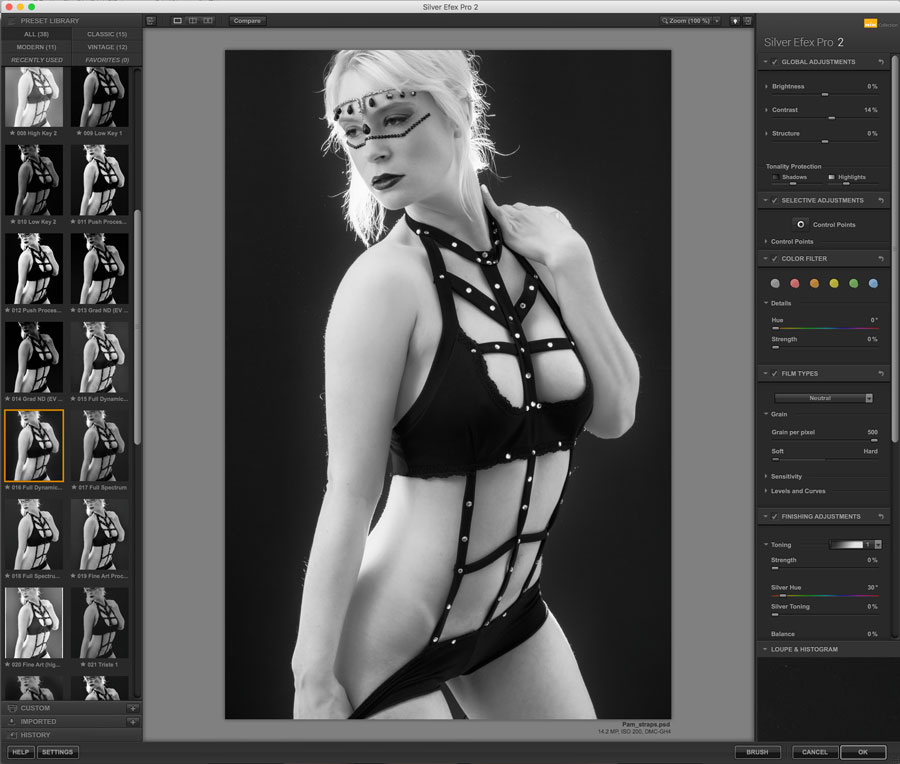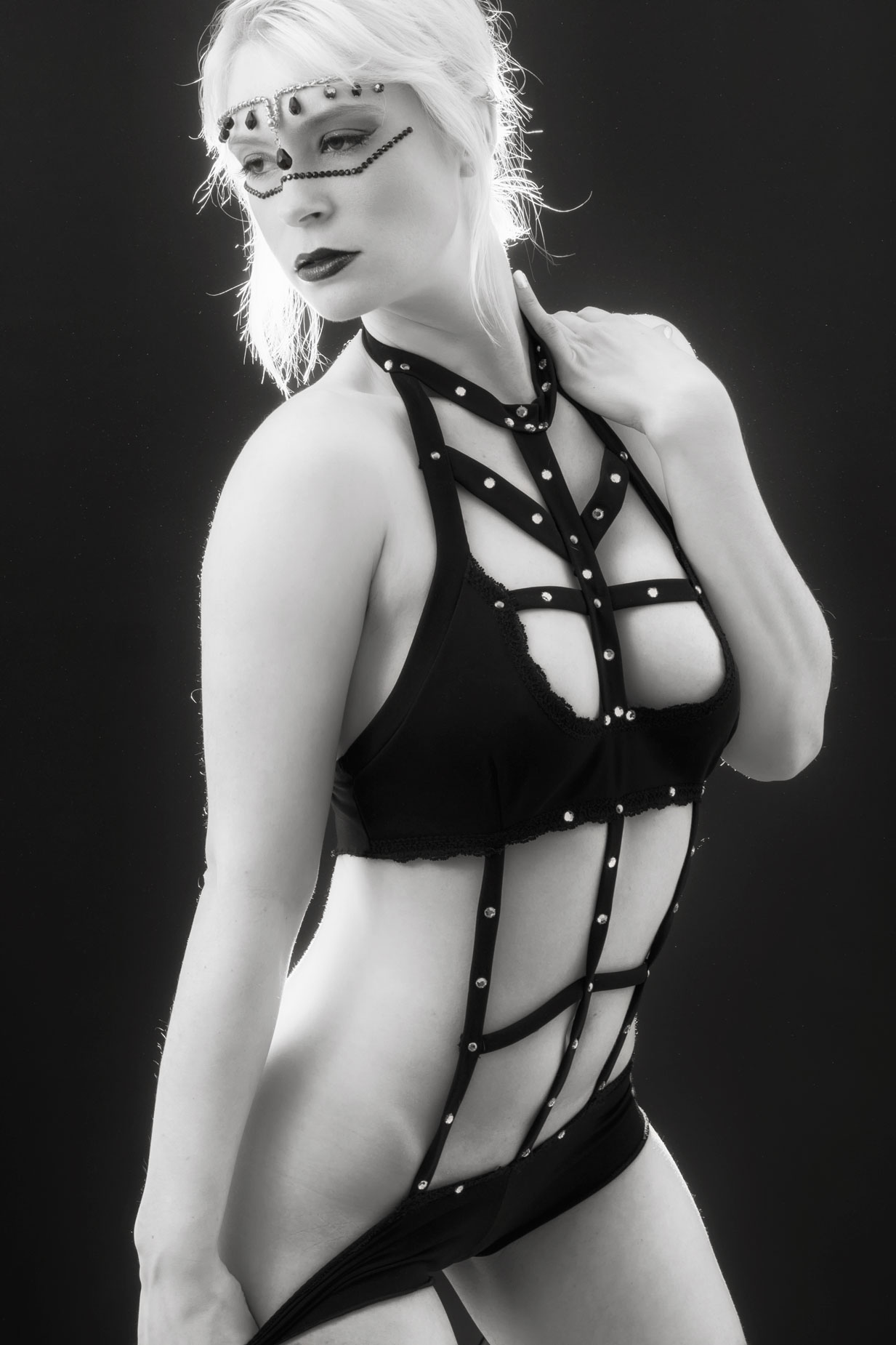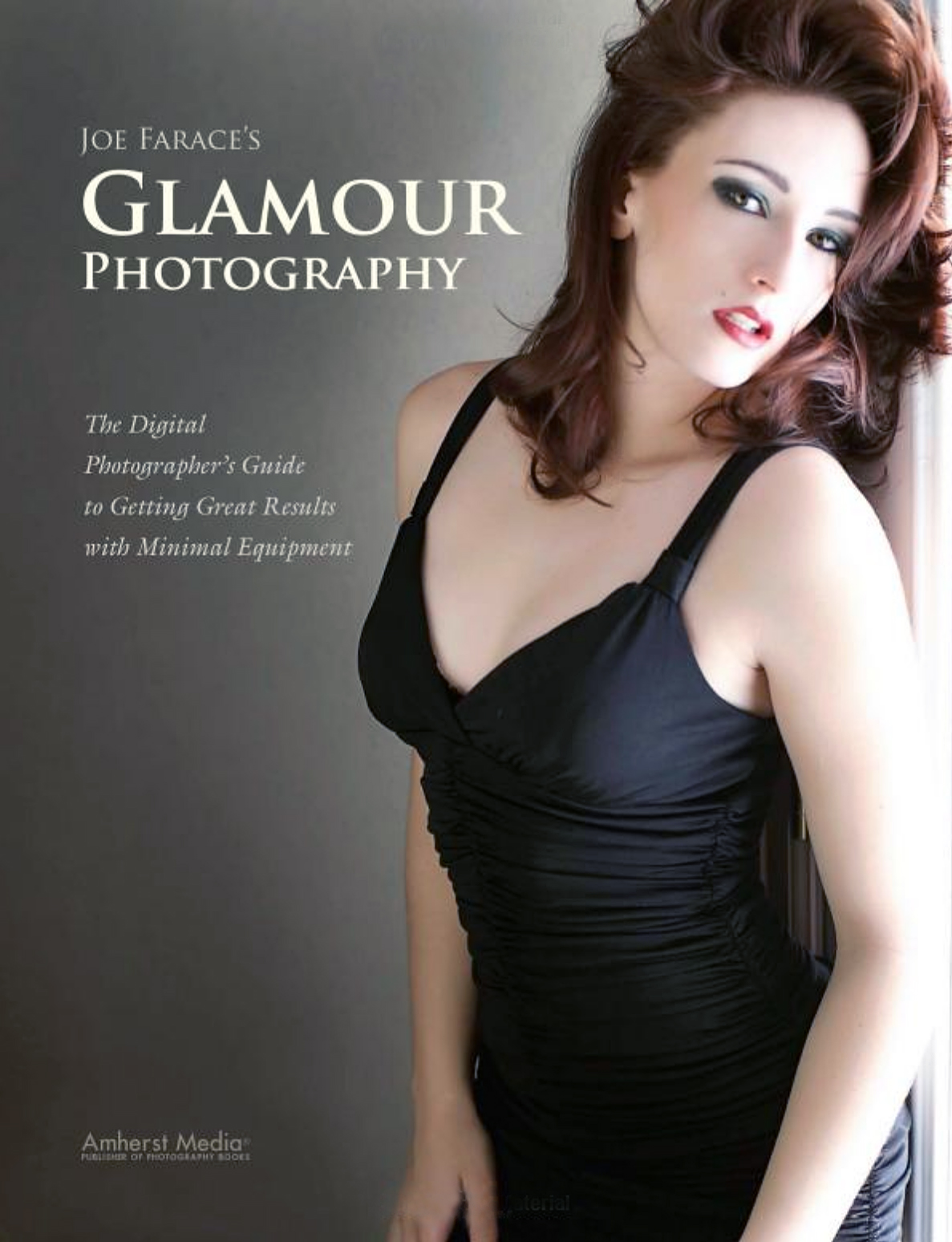Today’s Post by Joe Farace
It’s kind of fun to be sexy.—Tea Leoni
 There’s more to black and white photography than just a lack of color. As a creative medium, traditionalists may call it “monochrome” while some digital imagers prefer the term “grayscale” but to paraphrase Billy Joel, “it’s still black and white to me.”
There’s more to black and white photography than just a lack of color. As a creative medium, traditionalists may call it “monochrome” while some digital imagers prefer the term “grayscale” but to paraphrase Billy Joel, “it’s still black and white to me.”
Black and white is a wonderful media for making boudoir or intimate portraits because the lack of color immediately simplifies the image, causing you to focus on the true subject of the portrait—their face and body—instead of their clothing or surroundings. And sometimes the nature of the portrait subject demands the image be photographed in black and white.
 There are also some trendy aspects associated with creating images in black and white. TV, movies and the remaining fashion magazines periodically rediscover black and white as a way to present images that are different from what’s been previously shown. Right now, many portrait and boudoir photographers tell me they’re seeing a higher than normal demand for monochrome images than was previously was the case.
There are also some trendy aspects associated with creating images in black and white. TV, movies and the remaining fashion magazines periodically rediscover black and white as a way to present images that are different from what’s been previously shown. Right now, many portrait and boudoir photographers tell me they’re seeing a higher than normal demand for monochrome images than was previously was the case.
 How I made this shot: I photographed the indomitable Pam Simpson in my home studio with a Panasonic Lumix GH4 with a Lumix G Vario 14-45mm f/3.5-5.6 (at 40mm) lens. Exposure was 1/160 sec at f/9 and ISO 200. Lighting was provided by a Paul C Buff DigiBee DB800 monolight with Plume Wafer softbox mounted, with an Alien Bee B800 monolight with standard reflector was placed behind Pam to back light her hair and body. Background was Savage’s Black Infinity vinyl backdrop.
How I made this shot: I photographed the indomitable Pam Simpson in my home studio with a Panasonic Lumix GH4 with a Lumix G Vario 14-45mm f/3.5-5.6 (at 40mm) lens. Exposure was 1/160 sec at f/9 and ISO 200. Lighting was provided by a Paul C Buff DigiBee DB800 monolight with Plume Wafer softbox mounted, with an Alien Bee B800 monolight with standard reflector was placed behind Pam to back light her hair and body. Background was Savage’s Black Infinity vinyl backdrop.
The original RAW color image file is shown at above right. After retouching, I converted it to black and white using Silver Efex’s Full Dynamic (smooth) filter and afterwards added a touch of soft focus with Color Efex’s Glamour Glow filter where I added a touch of warming with the Glow Warmth slider to produce the final result that you see here.
Tips: When making what would become monochrome images in the studio, I prefer to shoot the original image using the camera’s RAW+JPEG option with the camera set in monochrome mode. This gives me two files: one color and one monochrome and I use the latter to show the subject approximately what the final image will look like. Because there are so many more tones in the color (RAW) file it’s easier to use for retouching and then I convert it to monochrome as I did here with the featured portrait.
 If you enjoyed today’s blog post and would like to buy Joe a cup of Earl Grey tea ($3.50), click here. And if you do, thank you very much.
If you enjoyed today’s blog post and would like to buy Joe a cup of Earl Grey tea ($3.50), click here. And if you do, thank you very much.
You can see many other models in my book Joe Farace’s Glamour Photography. The book is full of tips, tools and techniques for glamour and boudoir photography with new copies available from Amazon selling or $34.95 with used copies starting at the bargain price around nine bucks. Kindle copies are available for $19.99 for those photographers who preferring a digital format.